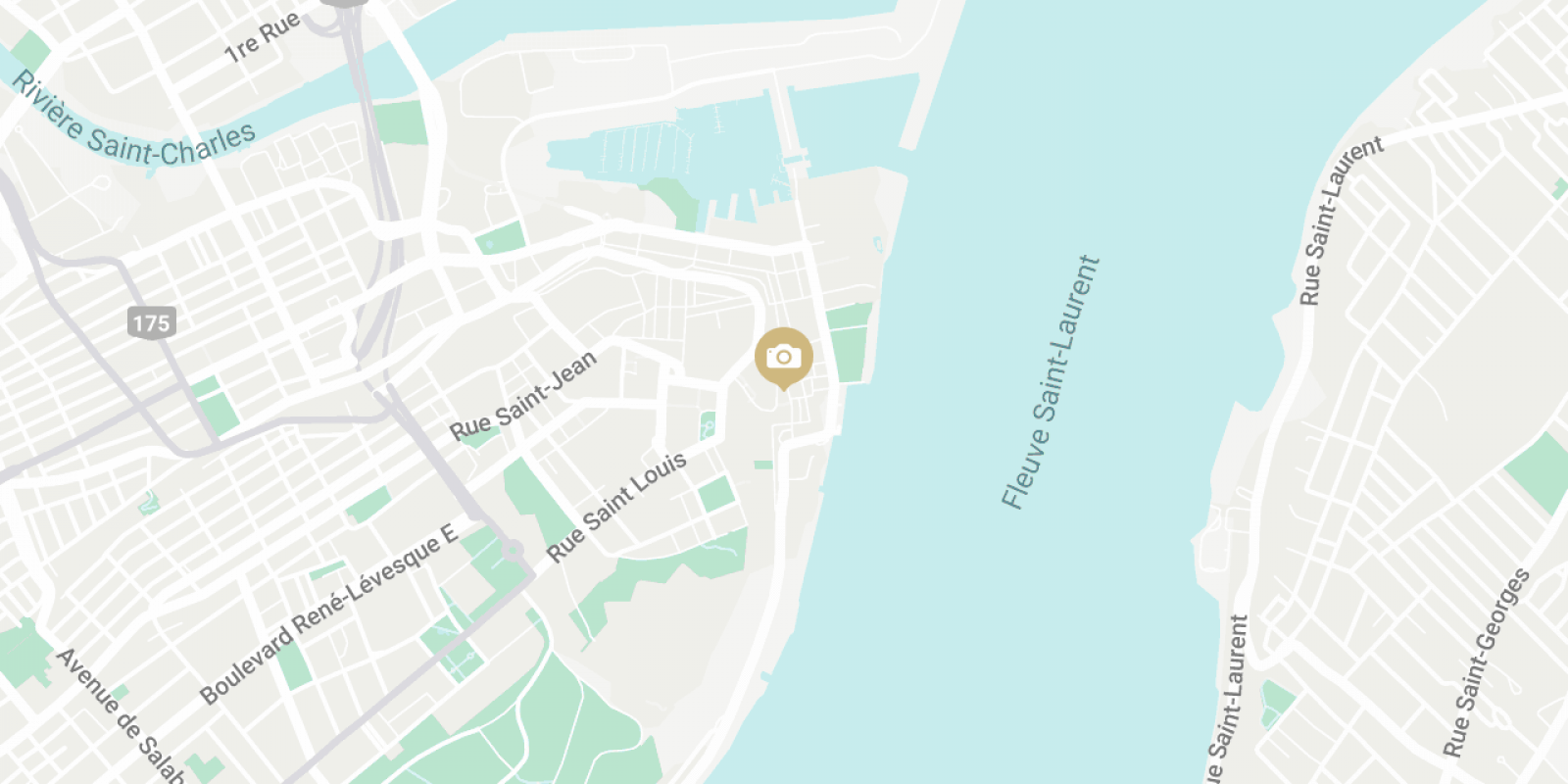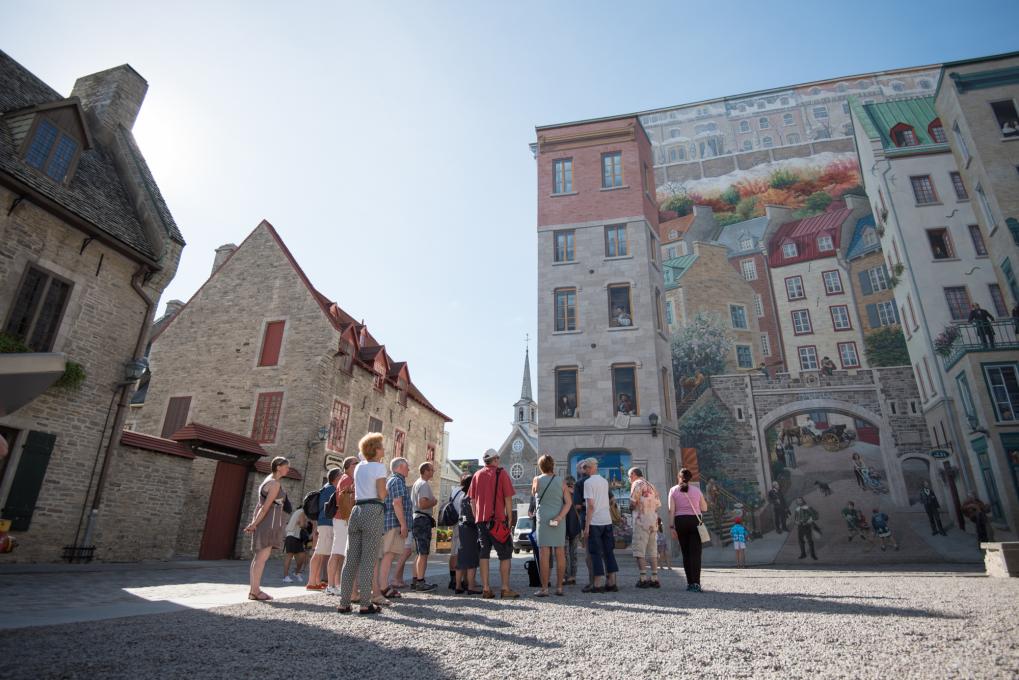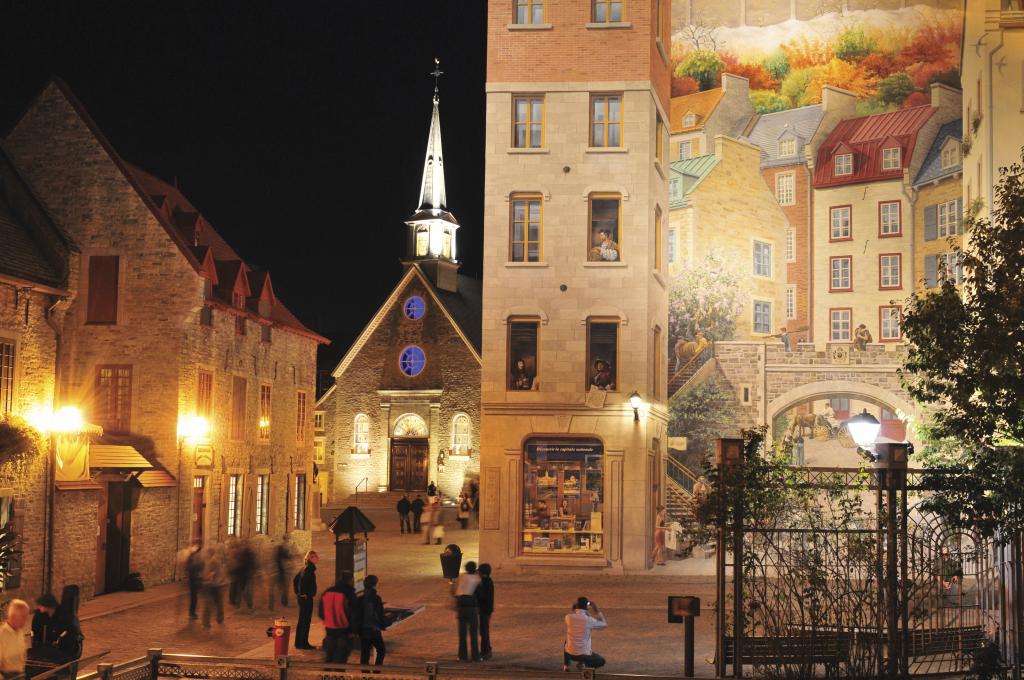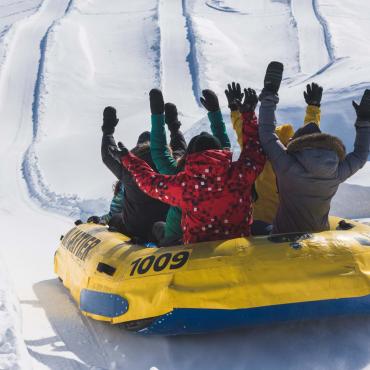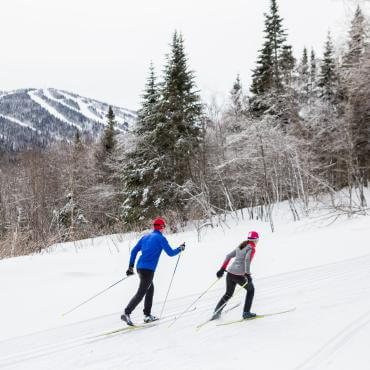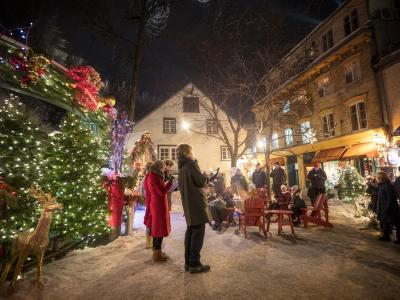Mural of Quebecers
Point of interest
Mural of Quebecers
Point of interest
This immense mural in trompe-l’œil style illustrates the history of Québec City and pays homage to several notable figures.
Inaugurated in 1999 and painted by 12 French and Québec artists over a 9-week period, the detailed realism of the fresco is absolutely riveting. Noteworthy historical figures from different periods of Québec City's past are juxtaposed with several elements associated with architecture, geography, the seasons and cultural communities.
This mural, next to Place-Royale, was painted on the wall of Maison Soumande on rue Notre-Dame at the foot of côte de la Montagne. It is one of the stops on traditional walking tours of the city.
Historical Figures in the Mural
Explored the Continent and Founded the First Settlements
You may have recognized Jacques Cartier (1) (1491–1557) and Samuel de Champlain (2) (circa 1580–1635). Both were explorers who mapped parts of northeastern North America. They also established colonies: Champlain in Québec City and Cartier, less auspiciously, in Cap‑Rouge. There’s also Louis Jolliet (3) (1645-ca. 1700), the Québec City native who mapped the Mississippi River.
The fresco features two people who spent their lives developing and protecting New France. Jean Talon (4) (1626–1694), the colony’s first intendant, focused on increasing the population and diversifying the economy; his contemporary, Governor Louis de Buade (5), Comte de Frontenac (1622–1698), helped extend the borders of New France and organized Québec City’s defence. In the 19th and 20th centuries, Louis Joseph Papineau (6) (1786–1871) and Thaïs Lacoste Frémont (7) (1886–1963) were agents of change: Papineau fought to increase the autonomy
Worked for the Greater Good
François de Laval (8) (1623–1708), Québec City’s first bishop, and Marie Guyart (9) (1599–1672), cofounder of Québec City’s Ursuline community, both worked tirelessly to further education in New France. The bishop taught at the Seminary of Québec, while Guyart taught the girls of the colony. The woman standing beside Marie Guyart in the fresco is Catherine de Longpré (9) (1632–1668), who devoted her life to the sick at the hospital founded by the Augustines in Québec City. Marie Fitzbach (10) (1805–1886) and Marcelle Mallet (11) (1805–1871) each founded a religious order (Sœurs du Bon-Pasteur and Sœurs de la Charité de Québec, respectively) and spent their lives helping the poor and outcast. And Alphonse Desjardins (12) (1854–1920) created a credit union that bears his name to this day.
Built Identity
François-Xavier Garneau (13) (1809–1866) is considered Québec’s first national historian for his Histoire du Canada. Félix Leclerc (14) (1914–1988) was acclaimed throughout the French speaking world for his incredible song writing and for launching a new musical style. And Lord Dufferin (15) (1826-1902), by campaigning to preserve and promote the fortifications, helped give Québec City its distinctive cachet.
The Fresque des Québécois recognizes some of Québec’s leading lights, though there are many more who deserve to be remembered. Luckily, the fresco is just one in a series of murals on a variety of themes and characters that you’ll find scattered throughout the city centre. Enjoy!
